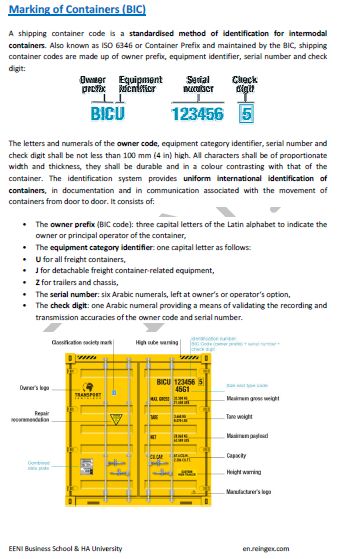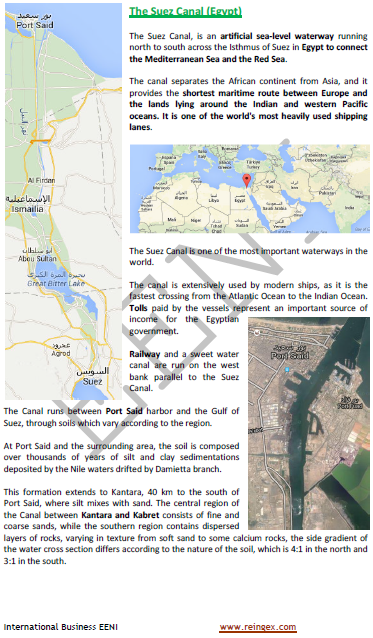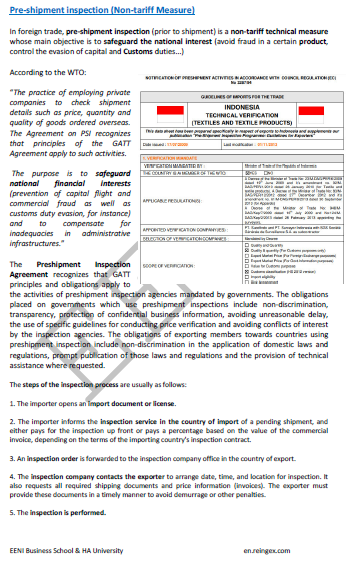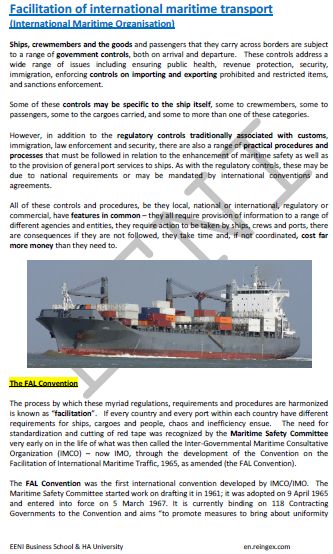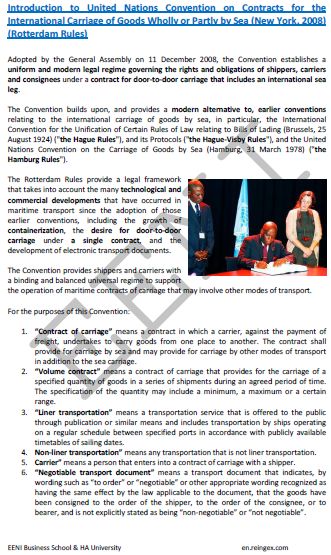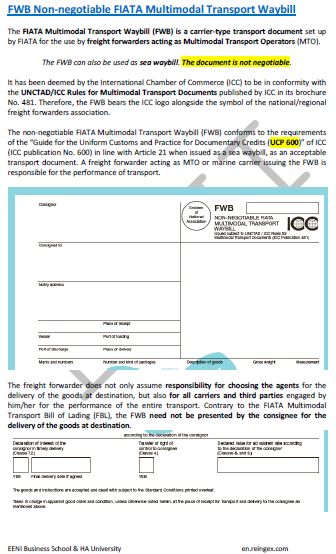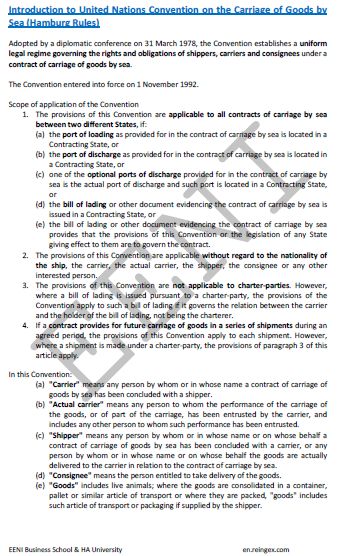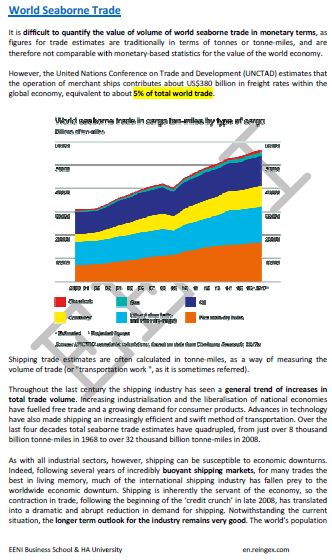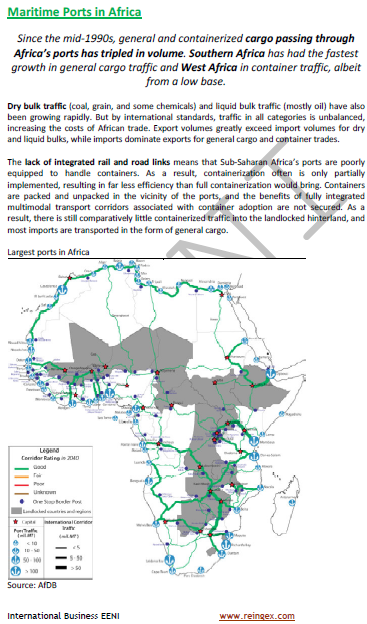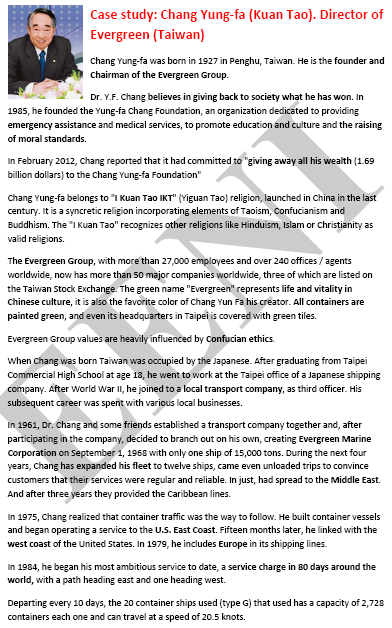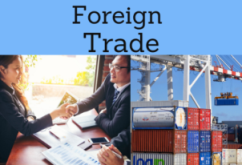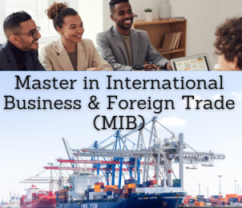Maritime Transport (Course)
Online Course: Maritime Transport. Bill of Lading (B/L). Sea freight
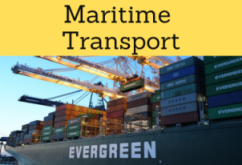
Structure of the Professional Course “International Maritime Transport” (5 ECTS) taught by EENI Global Business School:
- Introduction to the International Maritime Transport
- BIC (Containers)
- International Maritime Organization
- International Chamber of Shipping
- Analysis of the International Maritime Trade
- Regular lines
- Maritime transport costs. Freight. Affreightment (Chartering)
- Maritime transport insurance (Institute Cargo Clauses, Lloyd's Ship & Goods Clause...)
- Maritime transport agents
- Bill of Lading (B/L)
- Legislation of the international maritime transport
- Trade Facilitation
- Maritime transport in Africa
- Case studies:
- Shipping companies: A.P. Moller - Maersk Group (Denmark), Evergreen (Taiwan) and COSCO SHIPPING Lines Co (China)
- Main ports of the world. Ports of Rotterdam, Tokyo, and Singapore
- The world fleet
- Asia-Africa Corridor
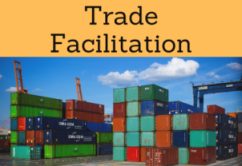
Maritime transport documents - FIATA.
Containers and International Transportation Enrol / Request for Information
Enrol / Request for Information

- Credits: 5

- Tuition Fees: EUR 120
- Open Online Enrollment
- Duration: 5 weeks It is recommended to dedicate about twelve hours of study per week following a flexible schedule. It is possible to reduce the duration dedicating more hours a week
- Download the syllabus of the Course (PDF)
Languages: 
- Also available in For improving the international communication skills, the student has free access to the learning materials in these languages (free multilingual training).
 Transport maritim
Transport maritim  Transporte marítimo
Transporte marítimo
 Transporte marítimo
Transporte marítimo
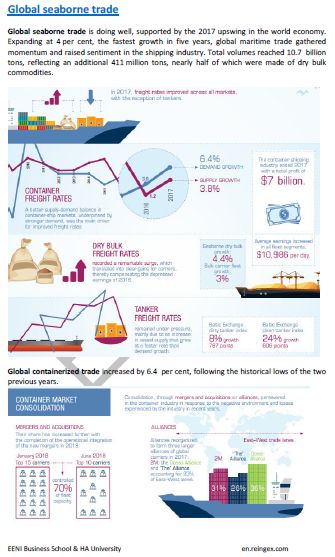
The objectives of the course are the following:
- To understand the importance of the international maritime transport in foreign trade (more than 80% of the volume of the global trade in products is transported by sea)
- To understand the functioning of the Marine Transport
- To learn about the involved parties in the marine shipment process
- To know the key concepts related to the transport goods and containers by sea (freight, security, stowage, risks, insurance...)
- To understand the various costs (freight) associated with Maritime Transport
- To examine the different insurance concepts related to the Maritime Transport and the main clauses (Institute Cargo Clauses, Lloyd's Ship & Goods Clause...)
- To explore the various types of transport involved parties in the marine shipment
- To analyze the different forms of documentation required for the marine shipment (Bill of Lading B/L) and how to complete them
- To study the different conventions and rules related to the marine shipment (Rotterdam, Hamburg, FAL)
- To understand the role of the main maritime institutions (International Maritime Organization, International Chamber of Shipping, FIATA...)

This course contains exercises that are evaluated, which the student must work out and pass to obtain the Diploma of the Professional Course: “in International Maritime Transport” issued by EENI Global Business School.
This course belongs to the following Higher Education Programs taught by EENI:
Logistics Courses: Transport in Africa, Marine Transport, Multimodal.
Diplomas: Foreign Trade, International Transport.
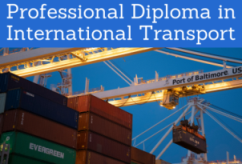
Masters: International Transport, Transport in Africa, International Business, Foreign Trade.
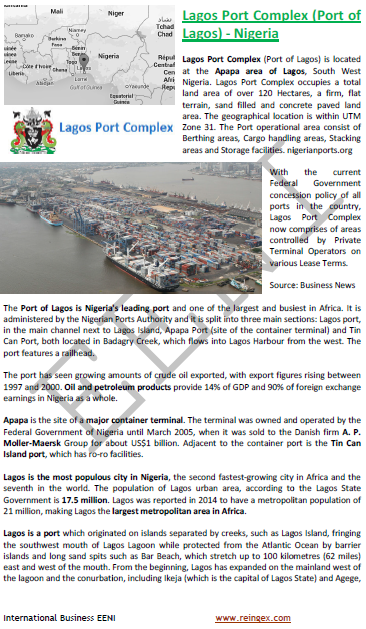
Of all types of international transportation, maritime is the one that moves the largest volume of goods in international trade.
The Maritime transport is practically the only economic type to transport large volumes of goods between geographically distant places. The main disadvantage of shipment by sea is that it is slow.
The maritime transport market is classified according to the service provided by the vessels in:
- Regular lines
- Affreightment (Chartering)
The Bill of Lading is a receipt given to the shipper by the delivered goods, demonstrating the existence of a transportation contract and granting rights on the goods.
- A Bill of Lading is a document issued by the carrier to confirm the receipt of products to be transported to an agreed destination. This document also serves as a contract of carriage and represents title to the products
- The Marine transport document used by the Shipping Lines is the marine/ocean bill of lading
- The transport document used by the charterers is the charter party bill of lading
On the regular lines, the shipping document is the Bill of Lading (Marine / Ocean Bill of Lading = B / L).
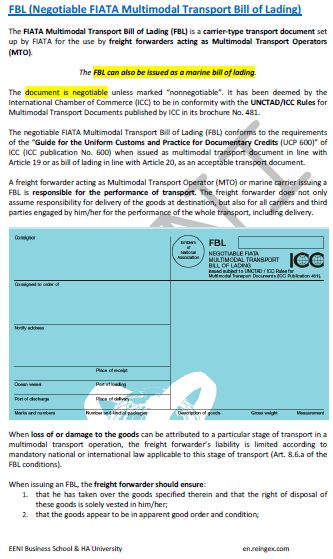
The Shipping lines usually issue two or three original bills of lading, each of which can be used to claim the product ownership.
- Therefore, the one who has the bill of lading has the title to the product
- A bill of lading is a highly valuable document, especially in documentary methods of payment
According to the UN Conference on Trade and Development (UNCTAD), the volume of the maritime trade continues to increase, stimulated by the growth of the dynamic emerging developing countries.
Since more than 80% of the volume of the global trade in goods is transported by sea, the maritime transport is the pillar of international trade and Globalization.
It should be noted that the average annual growth of the world maritime trade has been estimated at 3.1% in the last three decades.
The strong demand for the Maritime Transport services was driven by the growth of the global economy and international trade in goods.
There are many international conventions on Maritime Transport:
- Hague Rules (“International Convention for the Unification of Certain Rules relating to Bills of Lading”). These Rules govern liability for loss of or damage to products carried by sea under a bill of lading
- Hague-Visby Rules (“Brussels Protocol”). These Rules incorporate certain revisions to the Hague Rules, principally affecting the limitation of carrier liability
- Hamburg Rules were adopted in 1978. They radically alter the liability, which ship owners should bear for loss of or damage to products
- London Convention “Limitation of Liability for Maritime Claims” was signed on 1976. This Convention applies a virtually unbreakable right to limit liability and sets out the levels of limitation
- H.N.S., “Convention on the Carriage of Hazardous and Noxious Substances by Sea”
The port of Rotterdam is one of the largest ports in the world. 30% of all the maritime freight from and to the countries of the EU, passes through Rotterdam. The total input of products in the Netherlands amounts to more than 400 million tons per year and comes mainly by sea, land or river.
Distances from the Port of Rotterdam to:
- Port of Casablanca (Morocco): 1.681 Km / 7 days
- Port of Douala (Cameroon): 5.092 Km / 21 days
- Port of Dakar (Senegal): 2.558 Km / 8 days
- Port of Mombasa (Kenya): 7.120 Km / 29 days
- Port of Durban (South Africa): 8.156 Km / 34 days
The port of Le Havre (France), is the fifth European port, the first French port for foreign trade and container traffic and the second French oil port, the port of Le Havre connects 500 ports in the world with 250 regular lines.
The port of Hamburg (Germany) is the most important foreign trade platform with eastern and northern Europe.
Freight Forwarder. This is a party who acts as an intermediary between the exporter/importer and international shipping lines.
- The freight forwarder can also serve as a cargo consolidator and/or NVOCC (Non-Vessel Operator Common Carrier), who consolidates cargo not only for Maritime Transport but the other modes of transport as well
